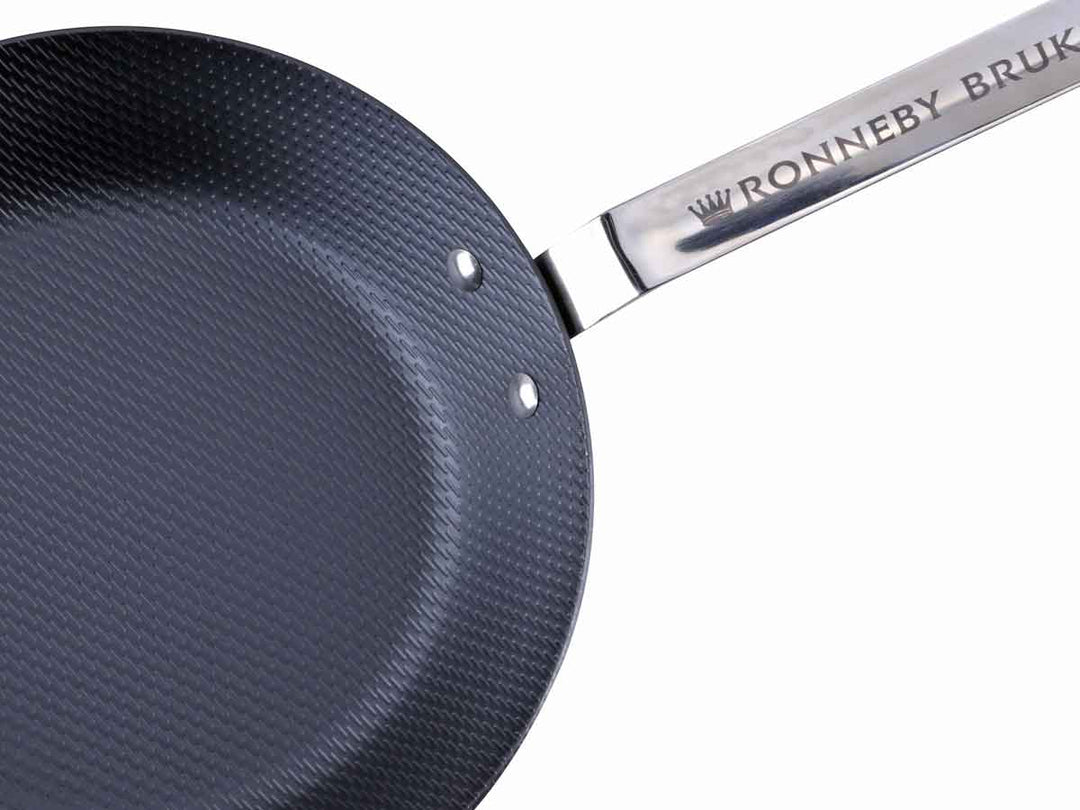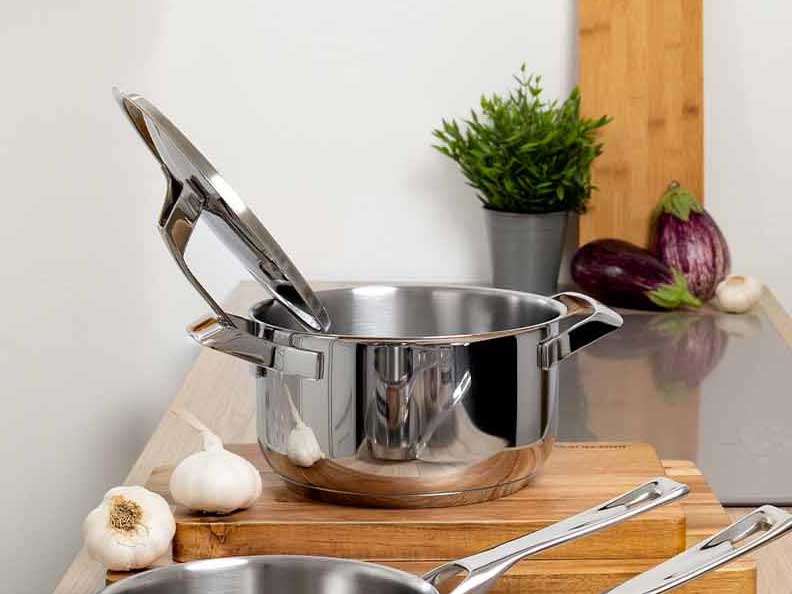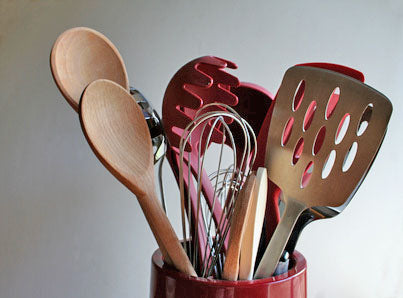Non-stick coatings (PTFE)
Non-stick coatings have been one of the most popular coatings for cookware for decades and offer the user many advantages. Some of the recurring questions associated with non-stick coatings are addressed below.
What is a non-stick coating?
Coatings based on fluoropolymers (PTFE) are traditionally referred to as non-stick coatings. The term "Teflon coating" is also commonly used. However, Teflon is a DuPont/Chemours brand name for their non-stick coatings. In this respect, although every "Teflon coating" is a non-stick coating, not every non-stick coating is a "Teflon coating".
What is PTFE?
The substance that gives a non-stick coating its very good and very durable non-stick properties in the first place is polytetrafluoroethylene or PTFE. To put it very simply, PTFE is a very temperature-resistant plastic that is extremely resistant to chemical attack (acids, alkalis, oils, etc.) and hardly anything can stick to it (said more physically: it is unpolar and has a very low friction coefficient). So three properties that combine to make it a very suitable and practical coating for cookware.
In addition, PTFE is also used in medicine, in plant and vehicle construction and in many other areas where its very special properties in this combination are advantageous.
Are non-stick coatings good for everything?
No, they are not. As a rule of thumb, non-stick cookware is intended for cooking at medium temperatures and for frying delicate foods that tend to stick. When it comes to searing at maximum heat, non-stick coatings are less suitable; here preference should be given to an uncoated product.
Are all nonstick coatings the same?
Classic non-stick coatings are similar only in that PTFE provides the non-stick effect. Apart from that, there are big differences in the layer structure of the various non-stick coatings.
The simplest coatings basically consist of just one layer, the actual non-stick layer. These coatings are not very durable, scratches occur easily, the coating rubs off quite easily and the cookware does not have a long service life.
Higher quality coatings consist of several layers: A primer improves the adhesion and durability of the coating. Intermediate layers contain internal reinforcement, eg tiny hard ceramic particles. These particles improve the connection between the individual layers and increase resistance to abrasion and scratches, because the spatula slides over the tips of the particles without touching the actual non-stick layer in between. Top layers ensure improved non-stick properties and an attractive surface finish.
Such multilayer, reinforced coating systems have allowed cookware manufacturers to often offer multi-year warranties on their products.
There are also coatings that are declared scratch-resistant or safe for metal kitchen utensils. However, as a user interested in a long product service life, you are well advised not to take this too literally and to treat such coatings with as much care as possible.
How long does a non-stick coating last?
That mainly depends on how you deal with it. You can work well with a simple coating for years, but you can also destroy a very high-quality coating in a very short time. Especially with severe overheating, you can quickly destroy even the best non-stick coating.
Are non-stick coatings harmful or even toxic?
No, in normal, responsible household use you will hardly be able to bring the coating to a temperature where it starts to decompose, releasing potentially harmful substances. If you approach the stove with a little thought and common sense, and are able to follow a few simple rules, you'll never run the risk of a non-stick coating getting this hot.
But of course, theoretically it is of course possible to create a scenario: If, for example, you place an empty non-stick pan, i.e. without oil or food, on the stove, heat the hotplate fully and then leave the pan unattended, in short, if you do everything that every pan manufacturer advises against, then of course there will come a point where the coating will overheat. After all, surface temperatures of 500°C and more are not unattainable for a high-performance cooker.
How do I clean a nonstick coating?
All you need to clean is hot water, some washing-up liquid and a soft dishcloth. First rinse any remaining small pieces of food out of the cookware. Stubborn residue can be tackled with a soft dish brush if necessary. Then put some washing-up liquid on the cloth and gently wipe the entire cooking surface. Then clean the outside in the same way. Finally, rinse with fresh water and then dry the cookware thoroughly.
Are non-stick coatings dishwasher safe?
In principle, most non-stick coatings are dishwasher-safe. However, the information provided by the manufacturer is always decisive. But cleaning in the dishwasher often does not make sense. On the one hand, manual cleaning is usually done in no time at all thanks to the non-stick effect, so that you don't necessarily have to give up space in the dishwasher. On the other hand, the coating in the dishwasher can suffer in the long run, because the hard water jet represents a not inconsiderable mechanical stress on the non-stick surface. A non-stick pan that is gently washed by hand will therefore usually last longer than one that is regularly washed in a machine.
If you still want to clean the non-stick cookware in the dishwasher, select a short program without a drying phase and remove the cookware immediately after washing. In this way you also prevent water stains, which otherwise tend to appear on the non-stick surface.
Is rubbing the non-stick coating with a dry cloth enough?
No, this is by no means sufficient and not recommended. On the one hand, a thin film of grease remains on the coating, which can thicken and negatively affect the non-stick properties. On the other hand, dry wiping can damage the non-stick surface if hard particles (grains of salt, burnt food, etc.) are rubbed over the surface.





